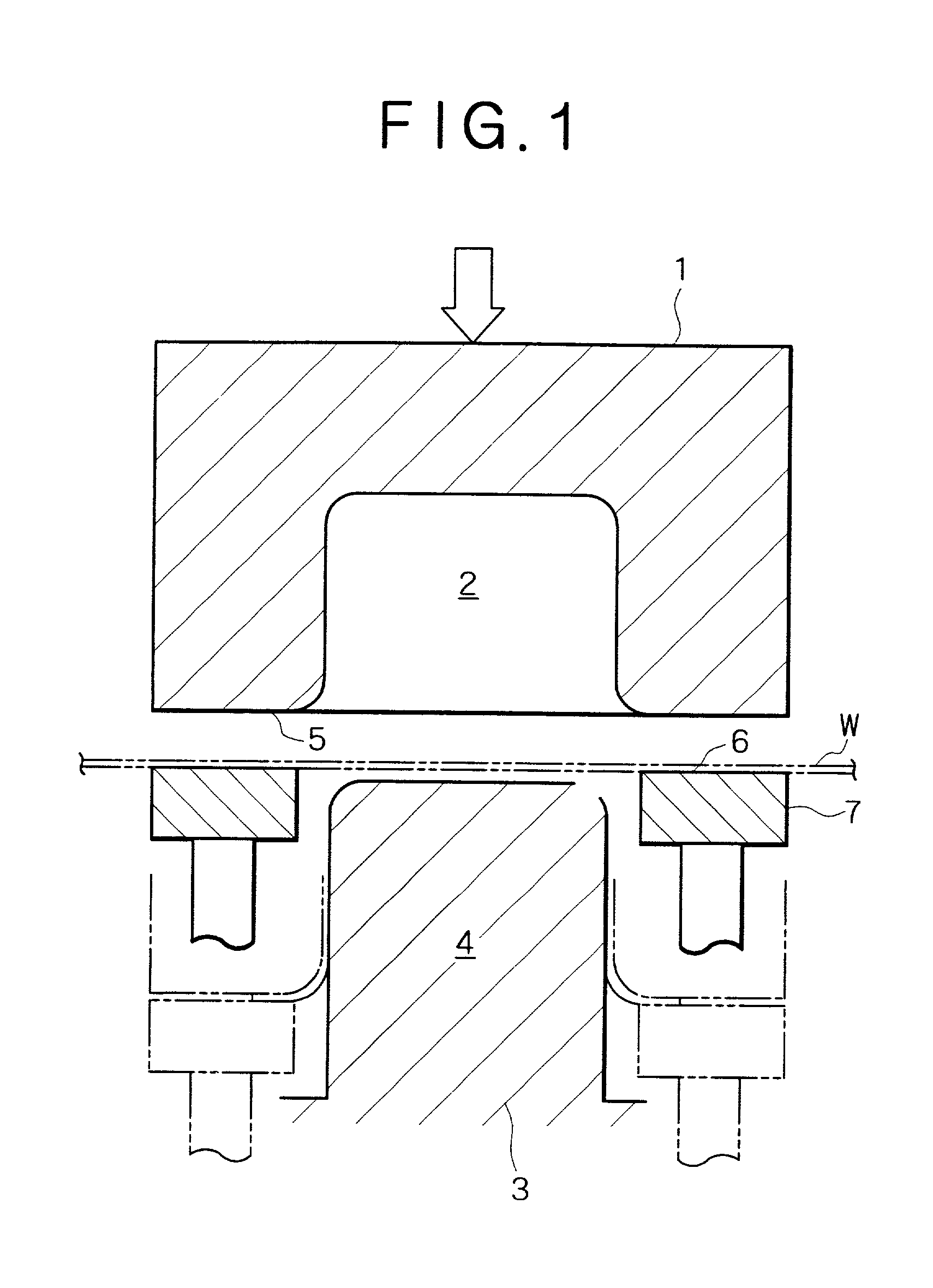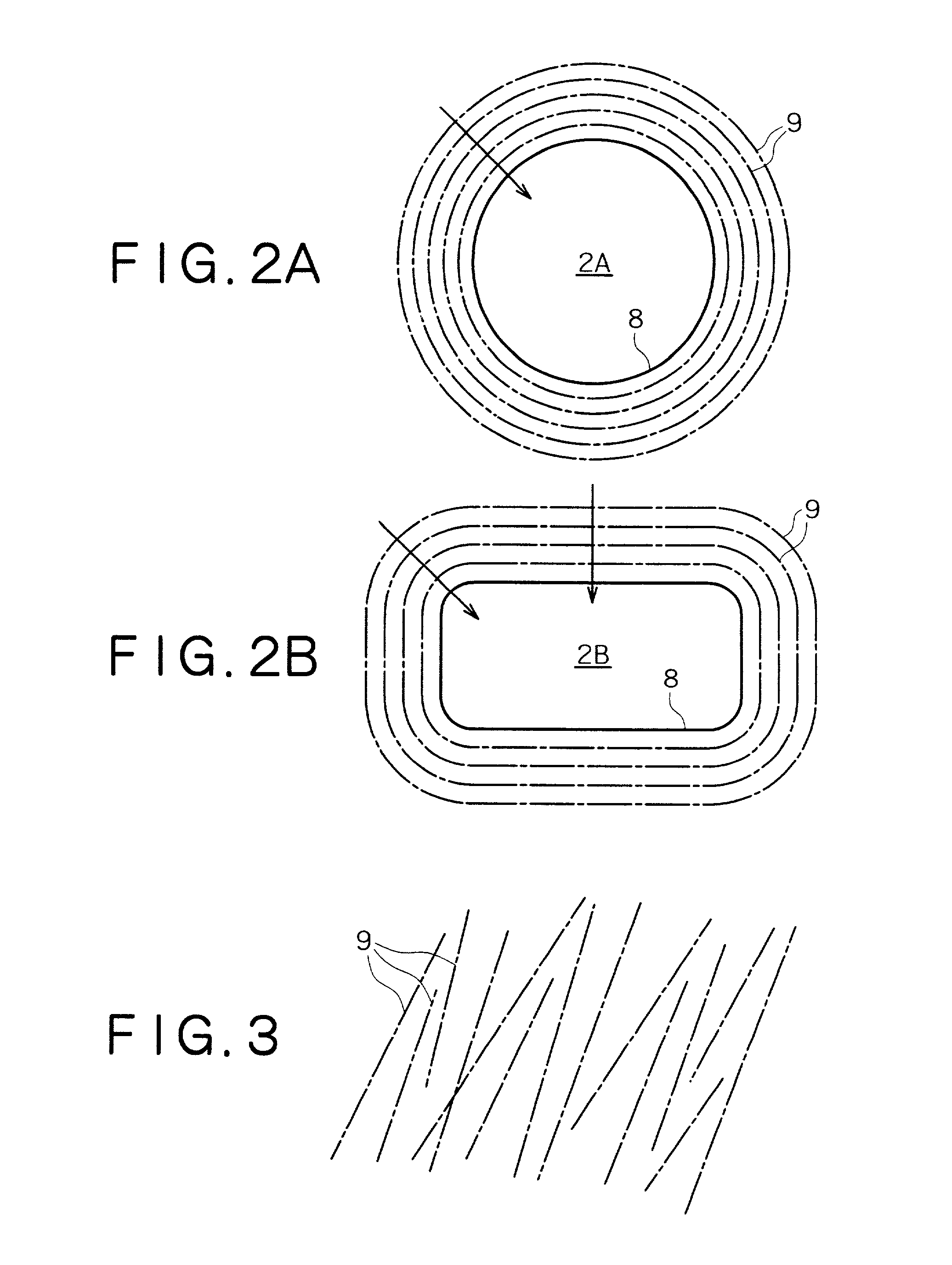Press die
a press die and press technology, applied in the field of new press dies, can solve the problems of preventing affecting the general acceptance of the product, and easy cracking, so as to prevent the blank from becoming thin, prevent the blank from falling off, and improve the general acceptance
- Summary
- Abstract
- Description
- Claims
- Application Information
AI Technical Summary
Benefits of technology
Problems solved by technology
Method used
Image
Examples
example 1
[0037] In Example 1 and Comparative Example 1, the slidability of blanks in draw-bending was evaluated in terms of reduction (%) in thickness of the vertical wall of the formed product, in view of the fact that the vertical wall after forming becomes thin variously depending on sliding resistance. The results are shown in FIG. 6. Broken lines in FIG. 6 represent the results in Comparative It is to be noted that reduction in thickness remains constant because the striated projections have no directionality.
[0038] It is noted from FIG. 6 that the reduction in thickness decreases in proportion to the decreasing angle between the direction of striated projections and the normal of the edge of the opening of the concave part. It is also noted that the die used in Example 1 gave the slidability and the reduction in thickness which are comparable to or superior to the ordinary press die so long as the striated projections are formed in the direction within .+-.25.degree. from the normal o...
example 2
[0039] The above-mentioned steel sheet (C) was formed into a U-shaped product by draw-bending by means of a die in which the striated projections on the first and second blank pressing faces varied in surface roughness (Ra) from 0.02 .mu.m to 100 .mu.m (measured in the direction perpendicular to the edge of the opening). The striated projections with Ra smaller than 0.2 .mu.m were formed by using an emery paper (#240-#1000), and the striated projections with Ra larger than 0.2 .mu.m were formed continuously by using a ball end mill (10-30 mm in diameter), with a feed pitch of 1-4 mm. The blanks were examined for slidability in the same way as mentioned above. The results are shown in FIG. 7.
[0040] It is noted from FIG. 7 that the reduction in thickness remains almost constant while the surface roughness (Ra) of the striated projections is smaller than 60 .mu.m (to be more strict, smaller than 40 .mu.m), but increases as it exceeds 60 .mu.m. This Example showed that the striated proj...
PUM
| Property | Measurement | Unit |
|---|---|---|
| Ra | aaaaa | aaaaa |
| Ra | aaaaa | aaaaa |
| Ra | aaaaa | aaaaa |
Abstract
Description
Claims
Application Information
 Login to View More
Login to View More - R&D
- Intellectual Property
- Life Sciences
- Materials
- Tech Scout
- Unparalleled Data Quality
- Higher Quality Content
- 60% Fewer Hallucinations
Browse by: Latest US Patents, China's latest patents, Technical Efficacy Thesaurus, Application Domain, Technology Topic, Popular Technical Reports.
© 2025 PatSnap. All rights reserved.Legal|Privacy policy|Modern Slavery Act Transparency Statement|Sitemap|About US| Contact US: help@patsnap.com



